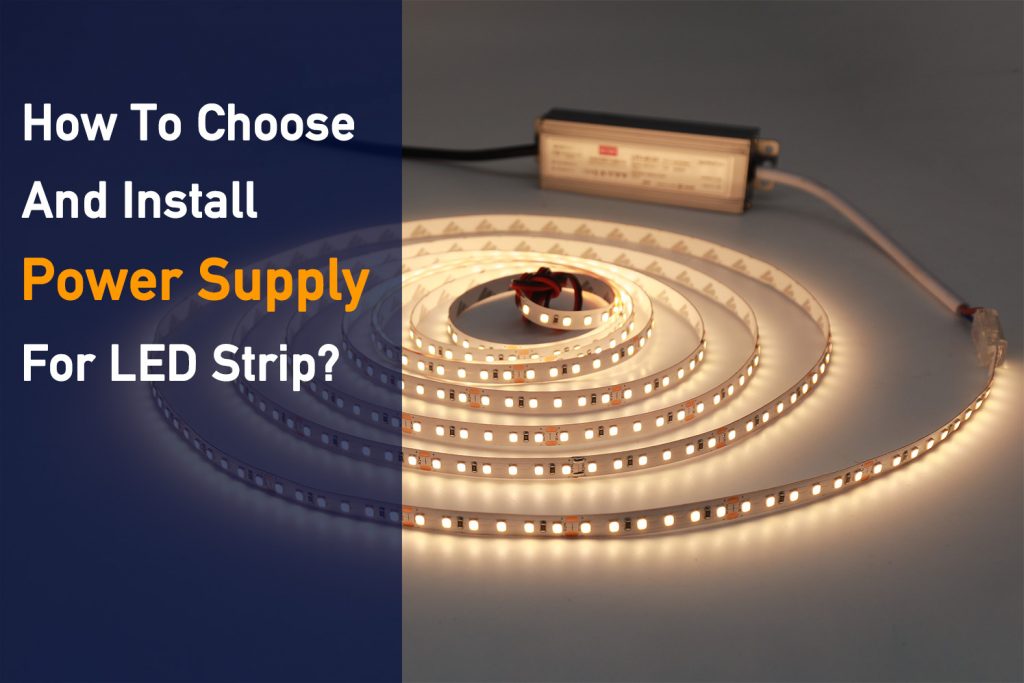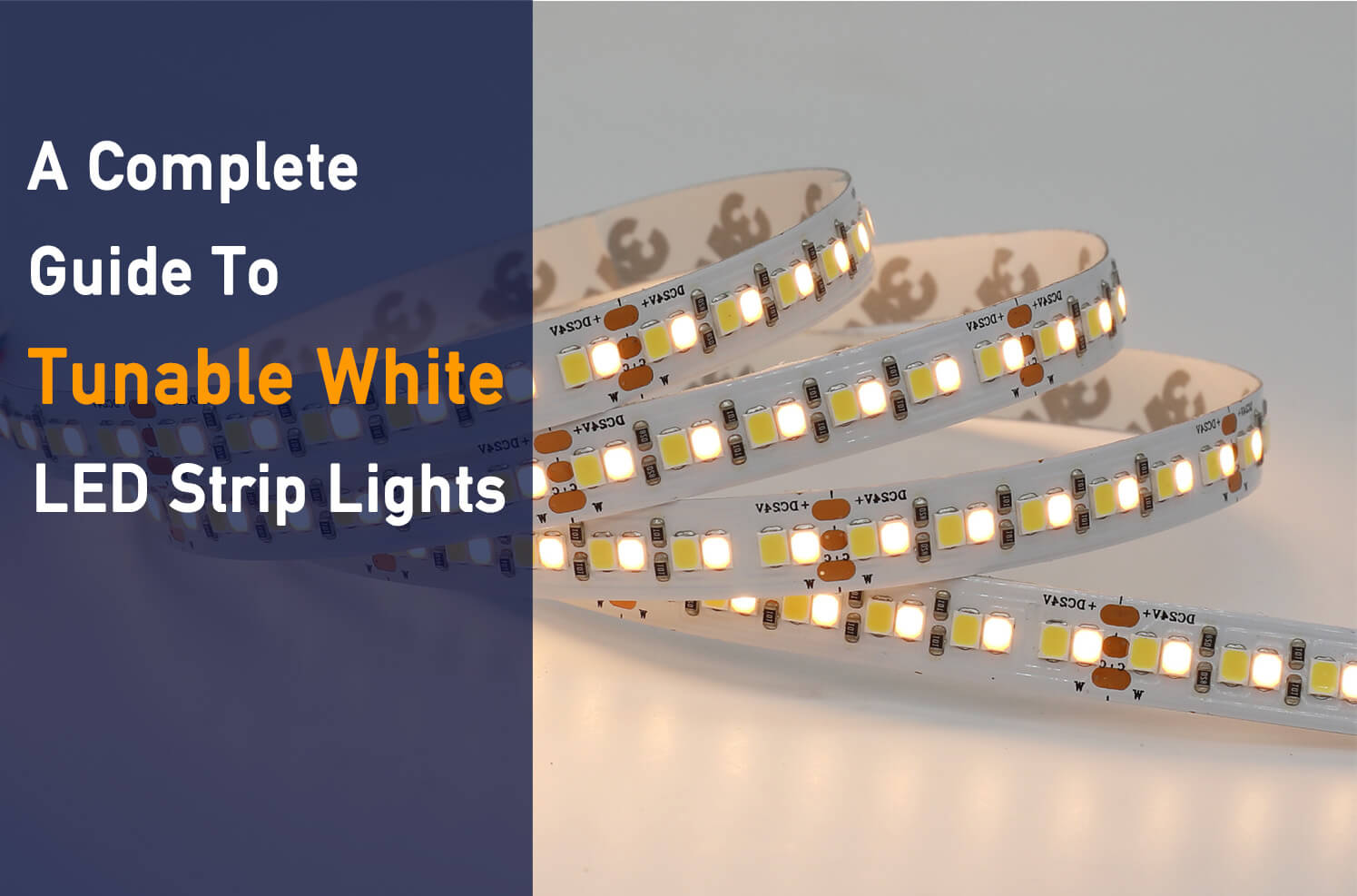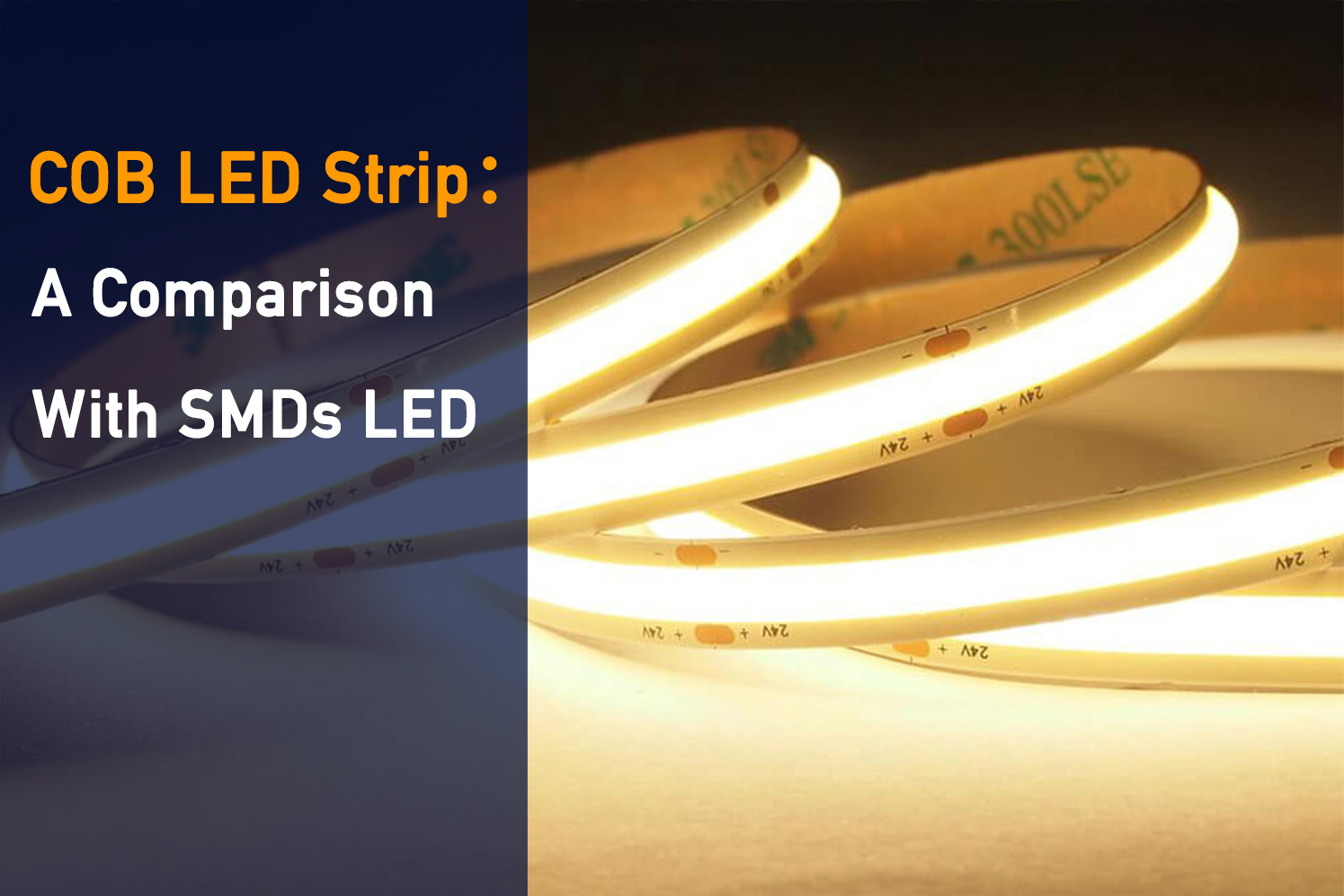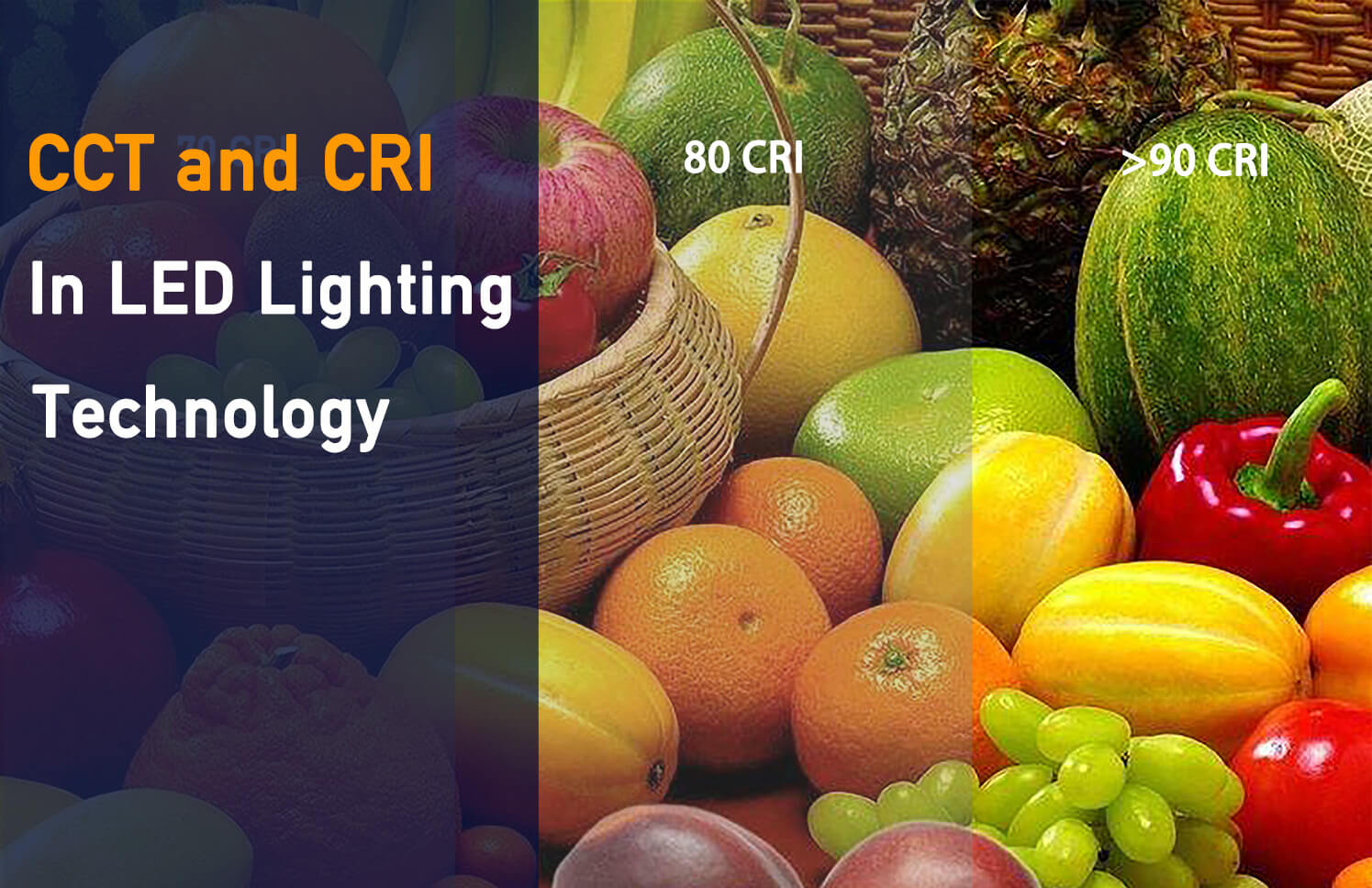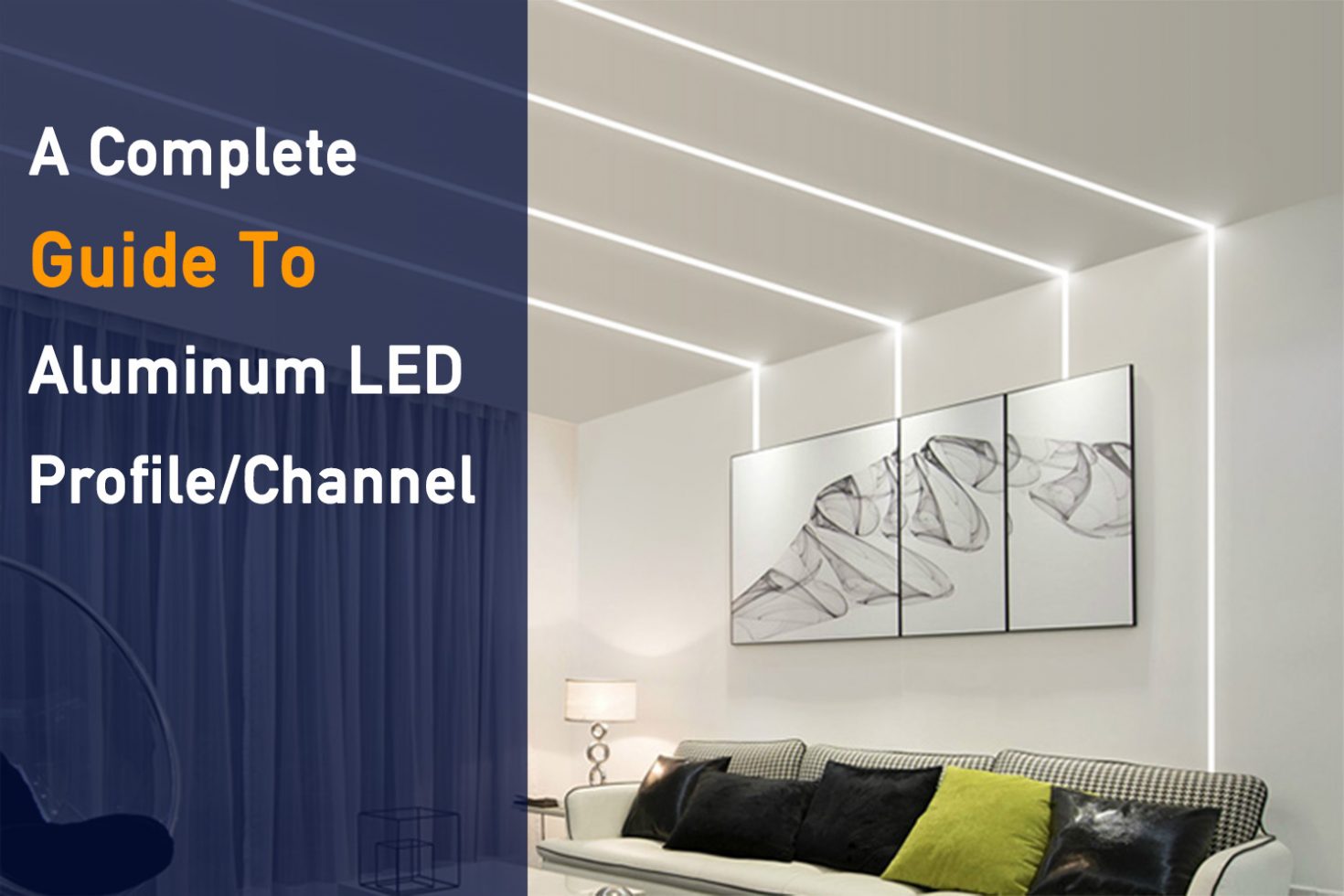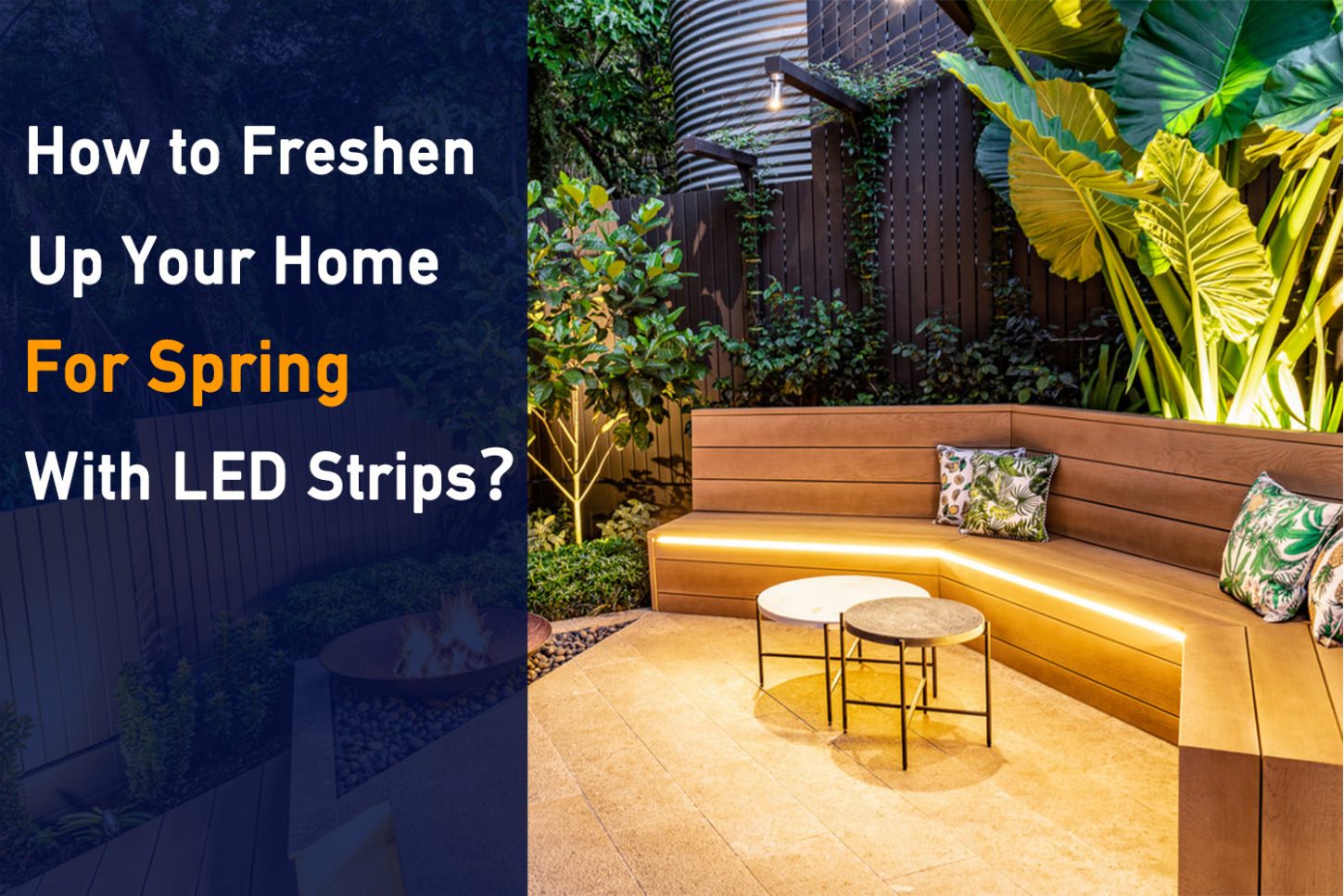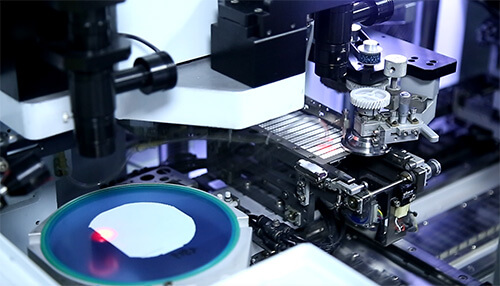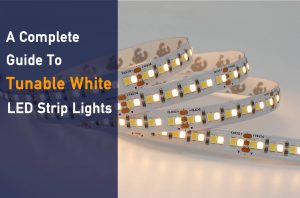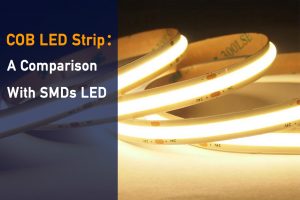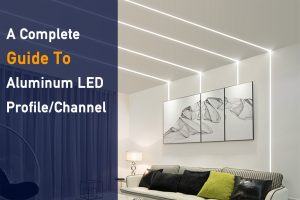There are many types of LED lighting products out there. Most of them need a low voltage power supply, also called an LED transformer or driver. It is vital to know the differences between various LED products and the types of power supplies they need.
You also need to know their mounting restrictions to ensure your lights and their transformers are compatible. Remember that using a 24V DC power supply for a 12V DC LED light will not make your lights any brighter. This rule also applies vice versa. Using the wrong power supply for your strips will only damage them, even potentially becoming a fire hazard. Also, always refrain from using two power supplies on one LED light or LED light controller.
In this post, we’ll walk you through how to choose the right power supply for your lighting project and how to install it. If you encounter issues with your LED Power Supply, this tutorial can help you with standard troubleshooting.
Article Guide
- 1. The factors you need to consider.
- 2. Recommended Power Supply Brands
- 3. Connecting Your LED Strips to Your Power Unit
- 4. Can I Connect Many LED Strips to the Same LED Power Supply?
- 5. How Far Can I Install an LED Tape from its LED Power Supply?
- 6. Tips When Installing Your Power Supply
- 7. Troubleshooting Common Power Supply Issues
1. The factors you need to consider.
It’s not easy to searching a right LED drivers in the variety of options out there. There are plenty of factors to consider when choosing the one that works best for you, you can get the basic knowledge in our guide on LED drivers here.
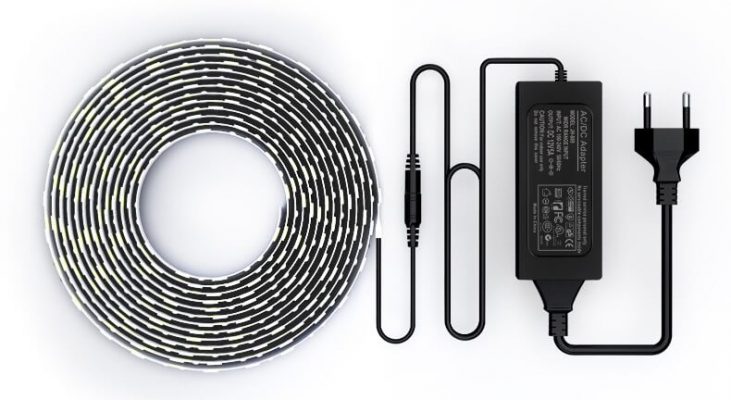
Why Use An LED Power Supply?
LED strip lights operate at a low voltage. The general strip voltages are DC 5V, 12V, or 24V. You can’t plug them directly into a power source since most households use 120 – 277V AC electricity. Because of this significant voltage difference, your LED strips will need a suitable power supply or driver. The driver will change high voltage AC into a low-voltage DC to match the needs of your LED strips to function.
Here are the factors you need to consider when choosing a power supply for your strip lights.
1.1 Constant Voltage or Constant Current LED Power Supply?
What’s Constant Voltage Driver?
Constant voltage power supply is designed for a single direct current (DC) output voltage. Most constant voltage power supplies(or drivers) are DC 12V or DC 24V. An LED light that is rated for constant voltage usually specifies the amount of input voltage it needs to operate correctly.
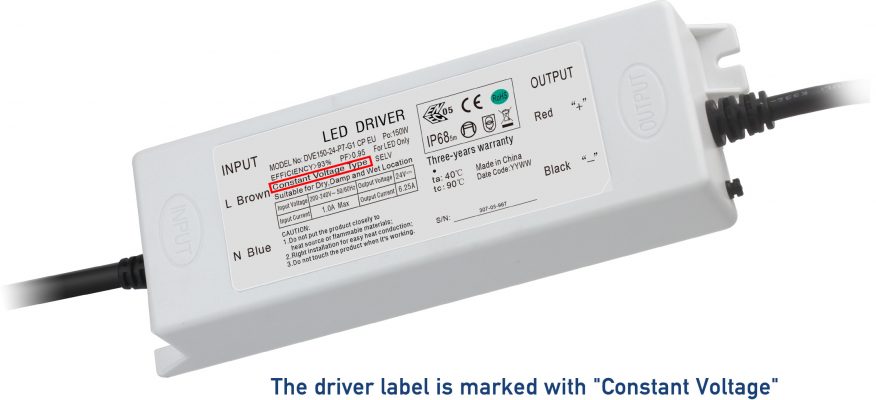
A constant voltage power supply receives standard line voltage (120-277VAC) which is normal output from the wall outlets. Constant Voltage Drivers switch this alternating current voltage (VAC) to a low direct current voltage (VDC). It will always maintain a constant voltage no matter what kind of current load is put on it.
What’s Constant Current Driver?
Constant current power supply is designed for a fixed output current (mA). The driver vary the voltage along an electronic circuit which allows current to remain constant throughout the LED system.
The principal amperage ratings for constant current LED drivers are:
- 350 milliamps (mA)
- 700mA
- 1 amp
A constant current driver is the best way to drive high power LEDs as it maintains a consistent brightness across all LEDs in-series.
Which one should I choose for our LED strip lights?
Constant voltage LED drivers are often used to power LED strips. LED strips mostly come in two standard manufacturing designs.
Constant Voltage Design (Without Built-In IC)
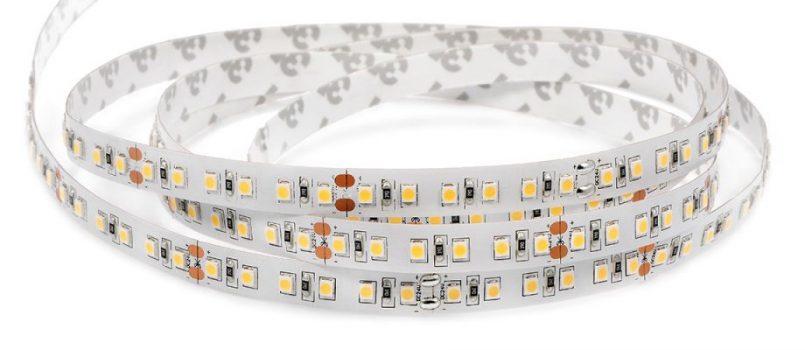
A lot of LED strips use a simple Constant Voltage Architecture. This design has little complexity and is cost-effective. But, it has low efficiency and doesn’t boast good current regulation. This design will require a constant voltage power unit.
Constant Current Design (With Built-In IC)
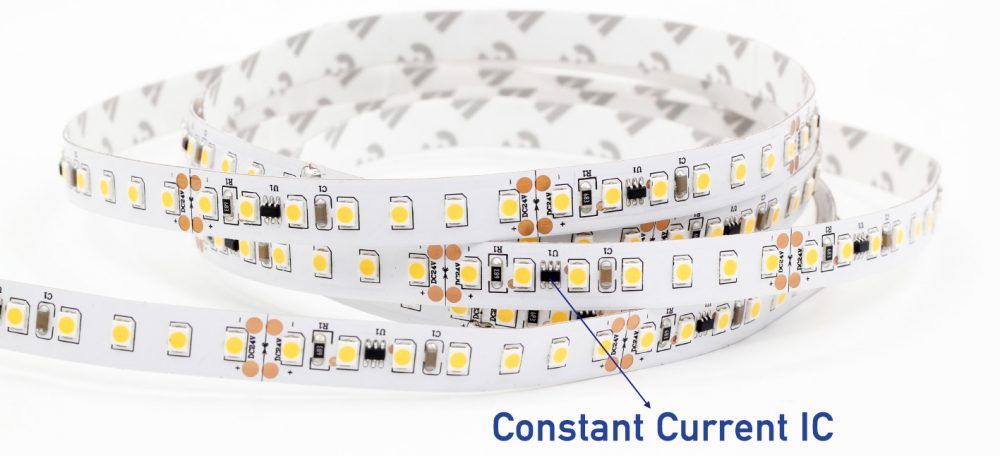
High-quality LED strips often incorporate this architecture with a built-in IC. This design provides a constant current output with more accurate control over individual strings. This means you’ll have less trouble with the voltage drop. This variant also needs a constant voltage power unit.
1.2 Determine The LED Strip’s Specifications
Your strip lights’ specifications determine the power supply you’ll need.

Voltage Compatibility
The classic voltage input for LED strip lights is either 12v or 24v.
Before choosing a power supply, make sure that the output voltage of the LED driver is compatible with the input voltage of your LED strip.
Watts Per Meter
The next factor to consider is how much wattage your strips will need.
Let’s say your LED strips consume at least 14 watts per meter. For an 8.5-meter strip, this means that your strip will consume 119 watts since 8.5 x 14 = 119.
To ensure your power supply remains optimal and doesn’t fail early, choose one that has at least 20% more rated wattage than your strips. For the example above, a power supply of at least 150 watts would be suitable.
Length of LED Tape
As we all know, led tapes come in reels. You’ll need to consider your strip’s run length when providing it with an appropriate power supply.
As a rule of thumb, the longer a reel goes, the more power it will need to consume. This same rule applies the more individual SMDs a strip has per meter.
If your strips run long, you’ll need to match it with a high-powered driver.
Calculate The Power Consumption
To measure the power consumption of your LED strip, multiply its total length by its watts/meter.
For example, say you have a 10-meter 24v strip that consumes 9.6 watts per meter. Multiply 9.6w/m by 10m, and you’ll get 96 watts.
1.3 Identify The Minimum Wattage of The Power Supply.
When choosing a power unit, make sure to apply the 80% rule.
This rule states that your LED strips only use 80% of the load from a power supply. Doing so ensures optimal performance and increased service life. Keeping your strip at 80% of your unit’s rated power can also keep it at the ideal temperature.
Using our 96-watt example above. If you need to drive a 96W LED strip light, then the power of driver should be:
- 96w / 0.8 = 120W
This means you’ll need a 120-watt driver or higher.
1.4 Determine The Power Supply Type.
When pairing a power unit with an LED strip light, compatibility is key. Which one you’ll need is determined by aspects such as installation and the extent of your project.
Power Adapter
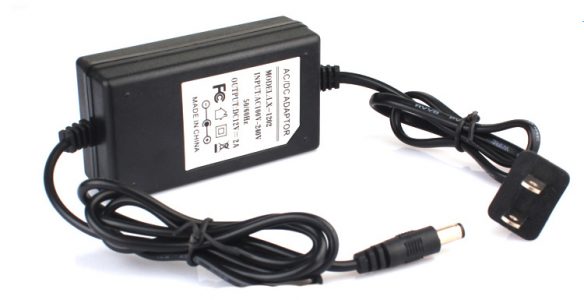
For applications that need less power, adapters are more suitable.
They’re easier to put in place while still having the output to maintain your strips’ performance.
Power adapters are also small enough for you to hide them. This keeps your fixture’s aesthetics look cleaner and more appealing.
LED Power Supplies
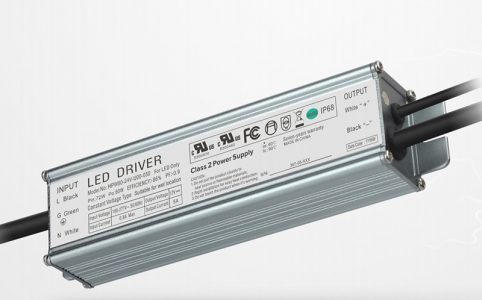
Power supplies, of course, can produce a much larger output compared to adapters.
This higher output makes them suitable for larger projects that use longer LED reels.
1.5 Some Other Considerations
Will You Need a Dimmable LED Driver?
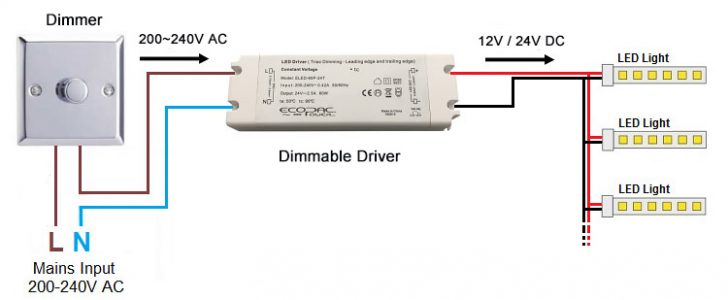
Most LED strips have a dimmable feature where you can adjust brightness. In this case, you’ll need to make sure your power supply can handle dimming capabilities.
Luckily, there are many power supplies out there that can complement a dimmable LED strip. Before purchase, see to it that your chosen power supply labels as dimmable.
Will You Need A Waterproof Power Supply?
LED strip lights boast a variety of applications, both indoors and outdoors.
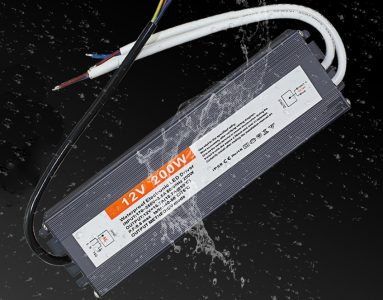
If you place your strips outdoors, they’re going to need protection against the elements. Not just your strips, but their power unit as well.
That’s where waterproofing comes in. Waterproofing protects your power supply from humidity that can damage its components.
Some indoor applications may also need a waterproof driver, especially if it’s a humid environment.
Check Safety Protection
For safety reasons, power supplies for LED strips should come with protection functions. These protection protocols should address risks such as over-currents, over-temperatures, short-circuits, and open-circuits.
These safety precautions will force the faulty and risky power supply to shut down. While power supply protection features are not mandatory, you’d want to have them nonetheless for your safety. In case a problem occurs in your power unit, you’ll have safety protocols in place.
So, it’s a good idea to install only power supplies that come with protection features.
Check UL Listed Certification
UL Standards are used to assess electrical products for excellence and safety.
If a product has passed this standard, it gets awarded a UL certification. Having a UL certificate indicates that a product meets UL’s benchmark of safety and quality. Check that the unit you intend to buy is UL-certified to ensure a reliable and safe product.
- UL Class 2 drivers comply with the standard UL1310. This standard signifies a safe output for contact, requiring no principal safety protection at the LED/luminaire level. Having this compliance means the product has little to no risk of fire or electrical hazards. These power units use less than 60 volts (dry) and 30 volts (wet) with less than five amps and less than 100 watts. Although safer, these limitations pose restrictions on the number of LEDs a Class 2 driver can operate.
- UL Class 1-certified drivers have output ranges outside of the UL Class 2 designations. UL Class 1 drivers have a high-voltage production, requiring safety protection within the fixture. Although fewer safety precautions exist, a Class 1 driver can accommodate more LEDs, making it more efficient than a Class 2 driver.
2. Recommended Power Supply Brands
Here are some of the best brands out there when it comes to power units. This list gives you a starting point in finding a reliable brand to power your lighting projects.
Mean Well
Mean Well is one of the top power supply manufacturers for electronic products.
According to a report by Micro Technology, in 2021, this company placed 4th as a global power supply maker. It boasts dozens of LED driver products well-received for their quality and design.
Tridonic
Another leading strip light power supply manufacturer is Tridonic. This company generally provides lighting solutions for a variety of applications and industries.
Along with its lighting innovations come various efficient power supply units for LEDs. It’s headquartered in Austria, gaining the trust of different company clients worldwide.
Inventronics
Inventronics is yet another leading global manufacturer of lighting solutions. This company focuses on creating reliable and innovative LED lighting products.
Its lineup of LED power units and drivers is one of the most sought-after in the marketplace.
Eaglerise
Eaglerise started in China in the 1990s, becoming a significant player in the lighting industry.
With its three R&D centers, it continues to be a worldwide provider of LED lights and their matching drivers.
3. Connecting Your LED Strips to Your Power Unit
LED strip lights are low voltage electrical devices. The first thing to remember is you should never connect them directly to an AC 220 or 110-volt power source. You’ll need a driver or a power supply to convert high voltage to low voltage (12v or 24v) for your LED strips.
Another thing to watch out for is polarities. There are two types of poles: a positive (+) and a negative (-). Always make sure to connect wires with the opposite poles. Connecting between wrong polarities can damage your device. When it comes to power adapters, you won’t have to worry about polarity.
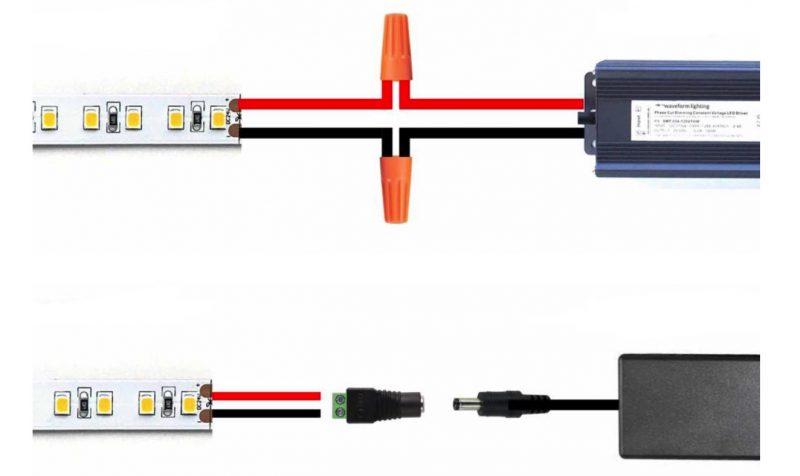
At last, connecting a strip to a power adapter is as simple as attaching a DC male connector into its female socket.
4. Can I Connect Many LED Strips to the Same LED Power Supply?
Depending on your supply unit’s output, it’s possible to connect more than one LED strip to a single unit. So long as your strip’s total wattage doesn’t exceed that of your power unit’s, you’re good to go.
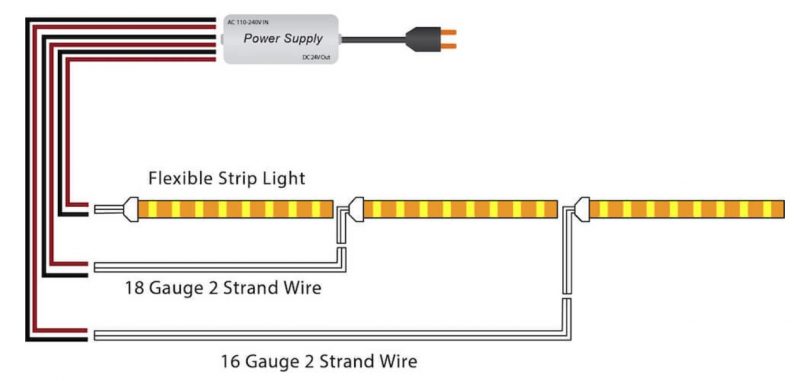
Yet, connecting many reels in parallel to a single supply can increase the chances of voltage drops. One method is by running them in series connections. This technique is helpful if you want to install a continuous reel run.
5. How Far Can I Install an LED Tape from its LED Power Supply?
Voltage drops become more pronounced the farther your SMDs are to a power supply. If you are using long cables from the power supply all the way to the LED strips, ensure that those cables are made of thick copper. Copper helps in minimizing voltage losses within the strips.
You can use a gauge chart to figure out the right cable thickness for your setup. The gauge chart allows you to see the right thickness for your LED strip’s power consumption.
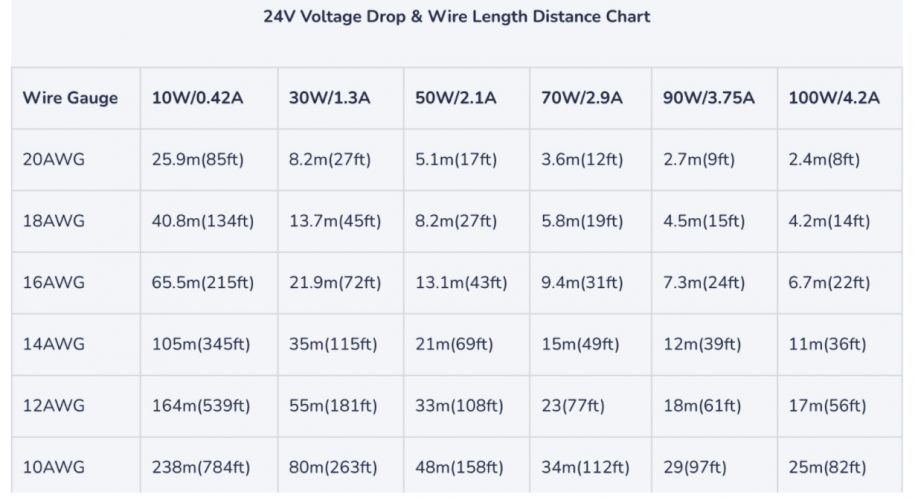
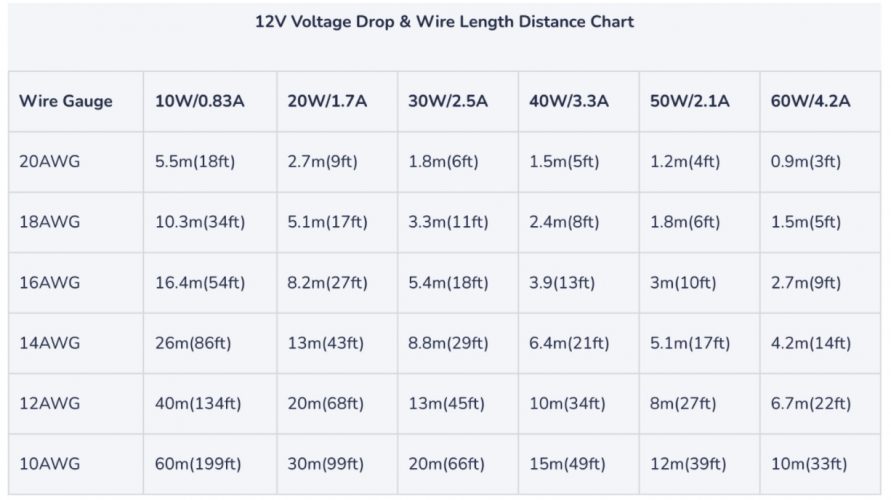
For details, you can refer to another article on “Practical Ways To Avoid Voltage Drop Across LED Strip“.
6. Tips When Installing Your Power Supply
LED drivers, much like most electronic items, are prone to moisture and temperature. You’ll need to mount your LED drivers in a dry location with enough airflow and ventilation to maintain their reliability.
Proper mounting is essential for airflow and heat transfer. Doing this will:
- maintain an ideal temperature
- prevent overheating
- ensure optimal performance
- and increase service life
Leave Your Power Supply Some Room to Spare
Ensure that you don’t consume your entire power supply’s capacity. Leave some room and use only 80% of your driver’s maximum rated wattage. Doing so ensures it doesn’t run on full power at all times, avoiding premature heating.
Steer Clear of Unnecessary Overheating
Airflow can make or break your power supply unit. It’s essential to make sure there is always enough airflow for your drivers to breathe during installation. Tight spaces restrict air flow, so make sure to avoid placing your drivers on those if you want to prevent overheating.
Try To Minimize Your Driver’s “On” Time
Take steps to lessen the time your drivers are turned on. Install a switch that you can flick off to ensure a completely closed circuit.
7. Troubleshooting Common Power Supply Issues
>> Get to Know Your Power Supply’s Mounting Restrictions
As much as you like, you can’t mount all kinds of power supplies the way you’d like for your project. Each power supply has its installation restrictions. You don’t want to ignore these restrictions if you wish to continue using your unit at the optimum level.
As an example, we’ll use a waterproofed power unit. You should install waterproofed power supplies facing up in a well-ventilated area. This mounting technique allows the efficient release of heat from usage.
If you ignore this recommendation, you risk power supply failure from overheating.
Our waterproof power supplies are much more lenient as far as mounting restrictions. These can be mounted sideways, upside down, or any which way, but they are not to be mounted in direct sunlight or in a manner that they are directly exposed to outdoor elements or in standing water. If installed outdoors, these power supplies should always be put in a weatherproof box.
>> Always Ensure Correct Wiring
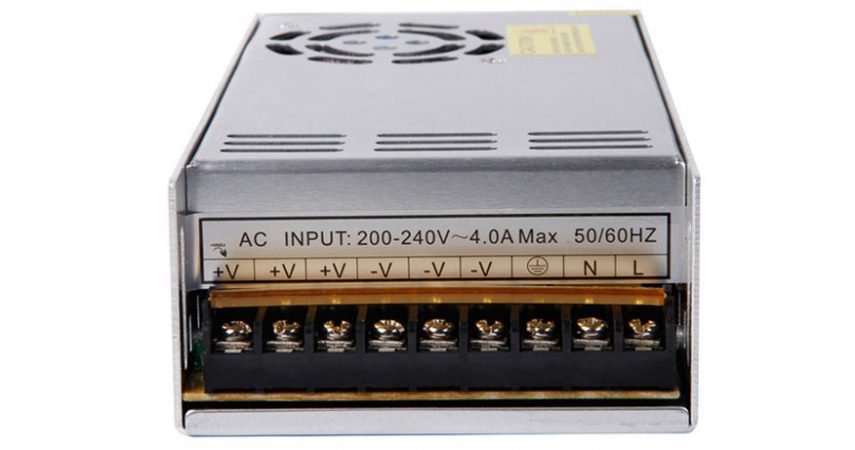
Wiring is a critical aspect of a well-functioning power unit. Whenever you troubleshoot an issue, make sure to check your wiring for anything amiss. Even experienced experts can make mistakes when it comes to proper wiring. Watch out for exposed wires that are touching the ports of your power supply.
Also, as mentioned above, make sure that you have the correct polarity connections. If you’re unsure if your wires connect in the correct polarity, you can do a check using a multimeter.
Most power units come with built-in protection for short circuits. This works because it causes an on and off effect on the power supply whenever a short occurs. Burnt or smoking wires are dead giveaways of short-circuits. This typically happens when loose wires make contact with one another.
Other causes include installing uncovered copper pads to a metal surface and having bridged solder joints.
>> Make Sure the Power Unit Has The Right Input Voltage Setting
Make sure that your unit configures in the correct setting for voltage input.
If you mistake not doing so, your power supply may run into some issues, some of which can be permanent. Irreversible damages occur if the unit runs at the wrong setting for an extended period.
Some power supplies come with internal switches to set input voltage settings. Make sure to use those switches to get your driver the proper input voltage.
Final Words
Choosing the proper power supply or driver for your lighting project may not be straightforward, but it’s by no means complicated. You’ll just have to consider a few factors when pairing your low-voltage strips to their appropriate transformer.
Your LED strip’s power supply can have an impact on its brightness, overall performance, and service life. When paired with a proper power unit, you can ensure that your strips perform at their best.
Are you looking for top-quality LED light drivers for your project? Check out our selection here at Myledy. We’ve been here for almost a decade and offer LED strip lights for any project, including their matching adapters to ensure peak functionality.

